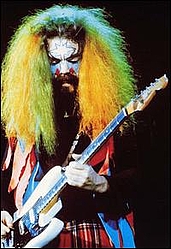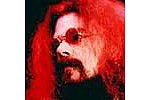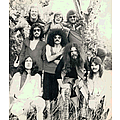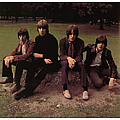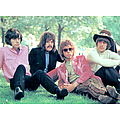Roy Adrian Wood (sometimes erroneously thought to be born as Ulysses Adrian Wood, from an offhand interview comment in the 1960s) (born 8 November 1946 in Birmingham, United Kingdon), is a songwriter, guitarist and multi-instrumentalist. He was particularly successful in the 1960s and 1970s as member and co-founder of the bands The Move, Electric Light Orchestra and Wizzard. As a songwriter, he contributed a huge number of hits to the repertoire of these groups. He was not only known for playing guitar, but also many other instruments, both in studio and on the stage. On some of his albums he has played every instrument himself. His first group in Birmingham in the early 1960s was Gerry Levine and the Avengers. Then he went on with Mike Sheridan & The Nightriders (the band later to become The Idle Race, in which his musical partner Jeff Lynne made his first steps). From this, and a variety of other Birmingham-based groups, the most talented musicians formed The Move, and Roy became their musical leader. The Move quickly entered the charts, and were famous for spectacular stage shows. After the departure of Move's singer Carl Wayne, Roy was pushed into the front position. He acquired a wild image wearing some sort of Indian disguise. Since Move members could not agree on the musical direction, and perhaps also because of their weird stage shows, the musical potential of the group was underestimated. Wood therefore developed plans to realize his ambitions in separate projects. He loved sound experiments, and complex arrangements, and was in this respect one of the most progressive musicians of his time. He was a proponent of combining rock'n'roll music with other styles, such as classical music, or the big band sound. In his bands, string and brass players were integrated members. When The Move was still on tour, he founded, together with his band colleagues Jeff Lynne and Bev Bevan, The Electric Light Orchestra (ELO), which was later led to big commercial success by Lynne. ELO broadened the basis of a rock band by adding a string section. ELO's early live performances were chaotic, and after increasing musical and personal differences with Jeff Lynne, Roy left and formed a new group, Wizzard, which assembled cellists, brass players and a bigger rhythm section, with several drummers and percussonists. In parallel, he also released several solo albums, exploring further musical directions. His 1973 album, Boulders, was an almost entirely solo effort, right down to the sleeve artwork. A second solo album Mustard (1975), including contributions by Phil Everly and Annie Haslam, was less successful. The line-up of albums was always fascinating, because of the large number of instruments Roy, and his band members, were playing. Roy himself is mentioned as singer as well as player of guitars, bass guitar, sitar, cello, double bass, saxophones, clarinet, trombone, tuba, recorders, oboe, French horn, banjo, mandolin, bassoon, drums, percussion, vibraphone, bagpipes and keyboards. Read more.
